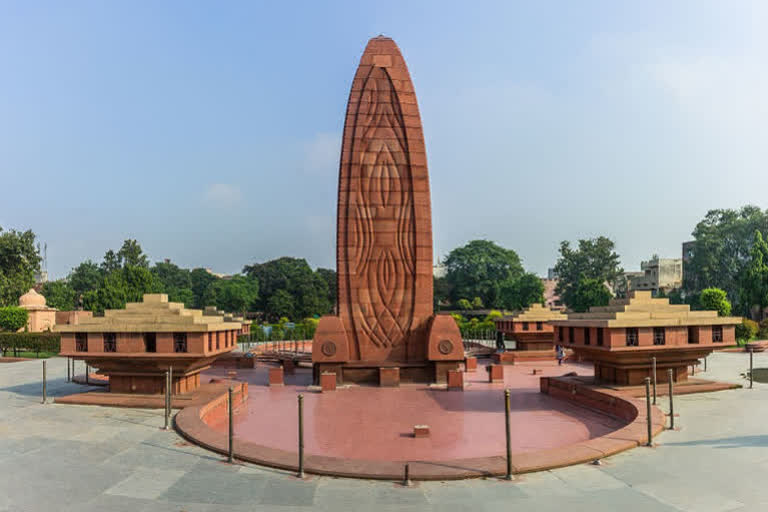Amritsar (Punjab):If there is a precise moment that clearly led the struggle for Indian Independence to fruition, it was the Jallianwala Bagh massacre on April 13, 1919. Much blood was shed in a single incident of otherwise non-violent struggle for the freedom from British and the blood-soaked floor and bullet-ridden walls shook the conscience of the leaders spearheading the movement. On this 75th year of Independence, let us pause to remember those innocent people butchered by the British autocracy.
Before the massacre, so much was brewing in the North-Western frontier of British India. The Gadar Movement of 1913 and the Komagata Maru incident of 1914 had started a wave of revolution among the people of Punjab. When the first World War broke out in 1914, many Indian soldiers were subjected to conscription in the fight against the German forces. Among the 1.95 lakh Indian soldiers in the British Army, 1 Lakh 10 thousand were from Punjab.
Nationalism and patriotism started gripping these soldiers who ventured out of the country for the first time and happened to see Europe. The British feared if these soldiers revolt, it would be difficult to control them. Given the changing environment in Punjab, the British came up with the contentious Rowlatt Act. Protests against the draconian law erupted in different parts when the local press started discussing it in detail. Protests took place in many parts of Punjab, including Amritsar. Despite the widespread protests, Rowlatt Act was passed on March 18, 1919.
According to Prof. Prashant Gaurav, two leaders namely Dr. Satyapal Malik and Dr Saifuddin Kichlew were prominent in these protests. There was also an attempt to rope in Mahatma Gandhi to strengthen the protest. However, Gandhi was stopped at Palwal on his way to Punjab on 2 April 1919. Sensing trouble, the British decided to trap these two leaders spearheading the protests. Amritsar District Commissioner, Miles Irving called Satyapal and Kichlew to his office on April 10, 1919 but arrested them. They were moved away from Amritsar and lodged in a house arrest at Dharmashala.
Tensions simmered in Amritsar after the arrest of these two senior leaders. More than 20,000 people protested in Katra Jaimal Singh, Hall Bazaar and Ucha Pul area. After one or two violent incidents, Lieutenant Governor of Punjab Michael O' Dwyer had called Army officer General R. H. Dyre from Jalandhar Cantonment board to handle the situation. Dyre on his part had a detrimental view about Indians, said Gaurav.
A day before the Jallianwala Bagh massacre, General Reginald Dyre marched in Amritsar with his entire armed forces and announced a curfew. Sadly, most of the local residents did not even know about the curfew. Unaware of the curfew, people gathered for a meeting at Jallianwala Bagh. Apart from this, on the day of Vaisakhi, the Sangat from far had reached Sri Harmandir Sahib to pay homage. Traders coming to participate in Gobindgarh Pashu Mela were also present there.
